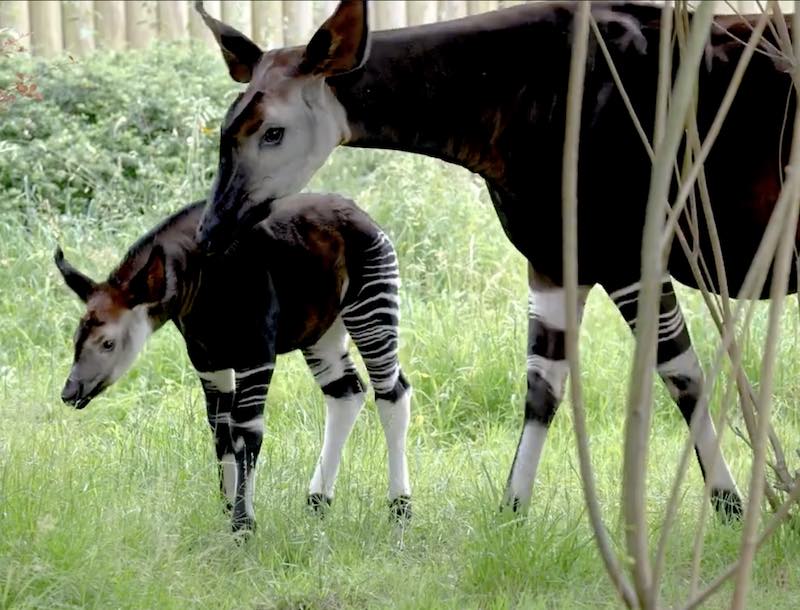In a burst of joyous festivity, zookeepers orchestrated a grand affair to herald the arrival of the latest addition to the enigmatic world of okapis—an extraordinary birth of ‘one of the least known and understood species on the planet.’
Meet the forest giraffe, a captivatingly endangered mammal that graced Chester Zoo’s grounds on May 12. Born to a 10-year-old mother and a seasoned 20-year-old male named Stomp, the adorable calf, christened Arabi, has spent her early weeks nestled in a snug hideaway behind the scenes. Now, at the tender age of six weeks, Arabi has ventured into the great outdoors, taking her inaugural steps under the dappled sunlight.
Capturing the essence of this heartwarming milestone, a collection of photos and a charming video unveil Arabi’s exploration of her enclosure, guided by the tender nudges of her mother.
This enchanting birth holds promise for shedding a renewed spotlight on the elusive and bashful okapi species. Classified as endangered, the okapi was unveiled to the scientific world in 1901, and its presence is confined to the lush rainforests of the Democratic Republic of Congo (DRC) in Africa. With a population of less than 10,000 remaining in the wild, these creatures don zebra stripes that seamlessly blend into their dense forest surroundings.
Arabi, the delightful calf, draws her name from a village nestled in the heart of the Okapi Wildlife Reserve within the DRC—the exclusive home to these captivating beings. In celebrating Arabi’s arrival, we embrace the hope that her presence will weave a captivating narrative, unraveling the mysteries of this rare and fascinating species.

Amidst the leafy haven of the English zoo, a proclamation echoes — the latest okapi arrival is not just a new face in the crowd; it’s a ‘vital’ contributor to the global okapi saga.
Hannah Owens, the enchantress of okapi care at Chester Zoo, gleams with enthusiasm, sharing, “Every birth is incredibly special indeed. Mum has been doing a fantastic job of feeding and nurturing her calf every day.”
Mike Jordan, the maestro orchestrating the symphony of animal and plant life at the zoo, chimes in, “The arrival of this okapi calf is not only a cause for celebration but also a significant milestone in our ongoing commitment to the conservation and protection of this charismatic species.”
With a twinkle in his eye, he adds, “Through our continued efforts, we hope to inspire others to join us in safeguarding these remarkable creatures.”
The okapi, a revered national symbol in the Democratic Republic of Congo (DRC), enjoys legal protection. Yet, the jungle of challenges — habitat loss, poaching, and the lingering echoes of conflict — casts shadows on conservation endeavors.
“Despite that, we’ve been supporting okapi conservation in the region for nearly 20 years and are now part of a global 10-year long project, in collaboration with the International Union for Conservation of Nature,” Jordan reveals, “Our mission: to craft an action plan and explore ingenious ways to ensure the last remaining populations not just survive but thrive.”
In this narrative, the zoo and its partners are not mere spectators to life’s unfolding drama; they are architects, weaving a tale of resilience and hope. The okapi calf is not just a newborn; it’s a beacon, illuminating the path towards a future where these mystical creatures dance freely amidst the challenges, their survival etched in the collective commitment of those who stand as guardians of the wild.
